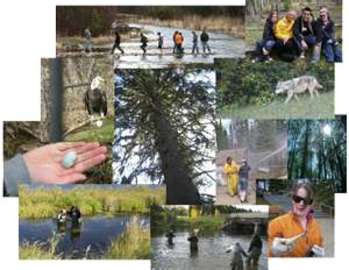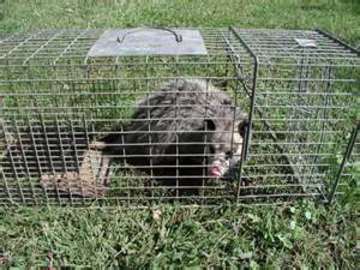
Professional wildlife management employees are required to have necessary education and training. Their job includes the trapping of wild animals with the use of chemical applications. They must be trained in the use of lethal techniques for wildlife management, which varies and are subject to federal, local and state regulations.
Wildlife traps and fish traps are used for a number of different reasons, despite their names. Sometimes they are used for commercial purposes, and often for recreation. Traps help capture and remove unwanted wildlife found around the outside of your home. Fish traps are typically used to harvest large amounts of sea life. There is a wide variety of traps, available in all price ranges and most are used by wildlife management employees.

Education Requirements for Wildlife Management Professionals
You will need a bachelor's degree in wildlife science, ecology or environmental science to work in wildlife management. An undergraduate degree in addition to a respectable amount of experience in the field entitles you to seek voluntary certification credentials through The Wildlife Society.
Some wildlife management jobs may require a master's degree or a doctorate if you seek a position in independent research or advanced administrative roles.

Courses in Trapping
Trapping is used as a means to control wildlife populations. You should sign up for courses in trapping while pursuing a wildlife management education degree. Students will also learn how to gather biological data of furbearers, which is an important component of damage control that oversees the interest of all animals.
Commercial Wildlife Traps
Commercial wildlife traps are usually used for trapping animals for their fur and reduce the predator population. Spring-loaded traps are the ideal method for trap an animal for the fur. This trap is placed on the ground, and bait is in a trail where the animal is typically found. For population or danger control, snares are used. Snares are anchored in the ground and have a strong rope that catches and then restrains the animal. Population control is best described as protecting livestock from coyotes or other predators.
Commercial Fish Traps
Nets and cages are among the traps that are commonly used for harvesting large quantities of fish at once. The fish is then sold for a profit. Net traps and thrown down around schools of fish, in hopes of catching many. This can also be dangerous for the sea animals, as they are known to trap unwanted species, such as dolphins.
Live Traps
Live traps are the least cruel of all. These are used for relocation purposes. Bait is placed inside the trap, and once animal crosses over, the spring floor will trigger the door to shut. The animals are then taken back to their natural habitat.
Safe Capture of Animals
Students learn during their training courses how to capture animals with minimal damage to the animals. Techniques of safe capture are taught that includes the application of custom drug combinations and formulations, capture strategies used, drug delivery technology, and the art of proper dart delivery.
Medical Training
Your training will involve assessment techniques in managing immobilized animals to ensure that the animals remain stable while undergoing medical procedures. Other skills you develop through training include how to monitor and interpret temperature, pulse and heart rate of animals.
You will be taught the measurement of capillary refill time and pulse oximetry. Other medical applications educate you on how to contact your physician if you become accidentally exposed to animal immobilizing drugs.
Tips and comments
Aspiring wildlife management professionals must complete wildlife management education and training to be employed in this highly skilled career field.